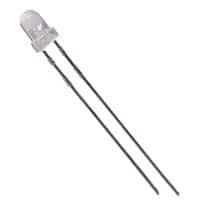How Black can VantaBlack be?
Any student of Physics knows that black surfaces are good absorbers of radiation of the visible and the infrared spectrum of light—they readily soak in visible light and heat rays. That is the reason they look black, as they reflect very little light. In fact, the amount of light reflected by a black surface is a measure of its blackness. Therefore, when VantaBlack, from the UK-based Surrey NanoSystems, is called blacker than black, there is a specific reason—it reflects only 0.04% of the light falling on it, including visible, UV, and IR radiations.
This property of VantaBlack gives it excellent characteristics. It offers high front-to-back thermal conduction along with high thermal shock resistance. As VantaBlack is also super-hydrophobic, it rejects water accumulation, the material design is perfect for applications varying from thermal camouflage to space exploration.
Vanta is an acronym for Vertically Aligned Carbon NanoTube Arrays. Billions of such tubes are grown on a substrate using a modified process of chemical vapor deposition. Each square centimeter of the substrate can hold more than a billion such tubes, each about 20 nm in diameter and from 5 to 14 µm long.
This packed forest of carbon nanotubes effectively traps incoming light. Individual photons bounce between the microscopic spaces separating each tube, and eventually dissipate as heat. There is very little particle fallout or outgassing as the material is a high thermal conductor. The heat passes on to the substrate, which has low thermal tolerances.
Surrey NanoSystems have developed three versions of VantaBlack—they vary on their capabilities of light absorption, heat abstinence, and application processes. The first version has already been described above. The second is known as S-VIS and it is unique as it can be sprayed on to a material (but not with a spray can), rather than deposited by vapor deposition. That means S-VIS can be directly applied to any surface material.
As S-VIS is sprayed on, the nanotubes cannot remain aligned. They are rather scattered, with the result that the light-absorbing properties of S-VIS are diminished, reflecting about 0.23% of the visible spectrum. Additionally, the user has to bake the material after spraying it, which limits the type of substrate he or she can use. However, S-VIS is perfect for any complex-shaped or 3-D object or for any applications where there is no flat surface.
VantaBlack’s third version is known simply is 2.0, and the company claims it to be even darker than the first version. It is so black that Surrey has not been able to measure the light reflected from 2.0 with their MID-IR or UV-VIS spectrometers. There is very little information on 2.0 from the company, but they have demonstrated in a video that 2.0 can absorb laser light.
There are innumerable uses for VantaBlack. Primarily, most uses are in the optical field, which benefit from the light-absorbing and low outgassing features of the material. For instance, pairing VantaBlack with a precision IR imaging platform such as FLIR can result in a high-resolution system able to differentiate between heat sources. When used in Earth-based telescopes, VantaBlack can reduce the atmospheric distortion and prevent practically all stray light reflection from the polished lenses.

